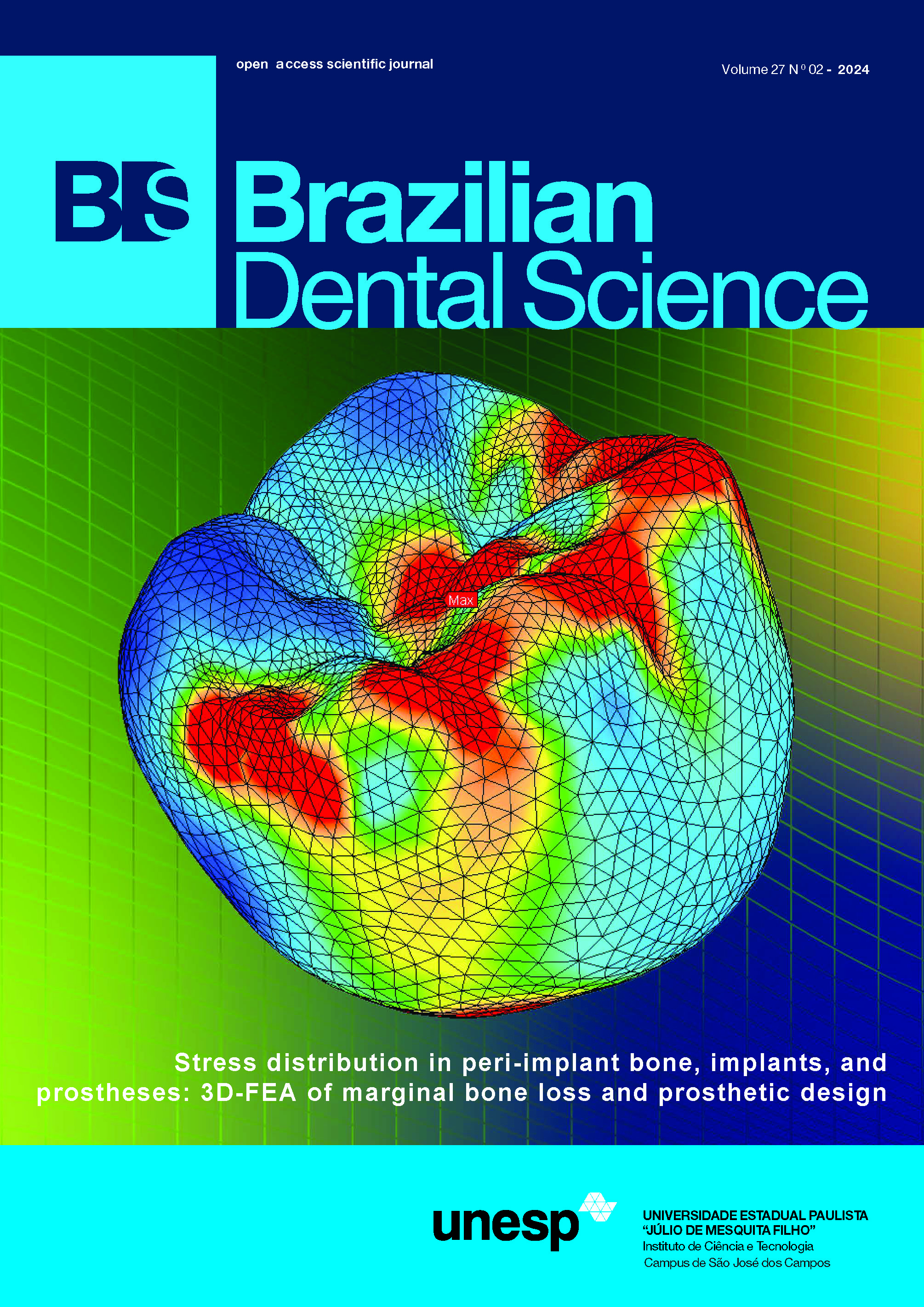The optical behavior of pressable lithia-based glass-ceramics under two different heat treatment protocols
DOI:
https://doi.org/10.4322/bds.2024.e4356Abstract
Objective: This study aimed to evaluate the optical behavior of pressable lithia-silicate and lithia-zirconiasilicate glass ceramics toward additional heat treatment protocols. Material and Methods: 40 lithia-silicate discs (15mm x 1mm) were heat pressed following the manufacturers’ instructions. Discs were divided into four groups (n=10) according to type as follows: two groups of lithia-silicate-glass ceramics; Gp(E) (IPS e.max Press; Ivoclar Vivadent AG), Gp(L) (GC Initial LiSi Press, GC), two lithia-zirconia-silicate pressable glass ceramics; Gp(C) (Celtra Press, Dentsply Sirona) and Gp(A) (VITA Ambria, VITA Zahnfabrik). Each group was subdivided into (n=5): Subgroup(T1): the thermal tempering temperature was set 9% below the pressing temperature, Subgroup(T2): the temperature was set 5% below the pressing temperature. Optical properties: color, translucency parameter (TP), and contrast ratio (CR) were evaluated by spectrophotometer (Aglient Cary 5000 UV-Vis–NIR) after pressing and after thermal tempering. Results: Thermal tempering regardless of temperature resulted in a color shift within the acceptability level as deltaE for Gp(E) (3.18±2) followed by deltaE for Gp(L) (2.47±0.19) by deltaE for Gp(C) (2.26±0.14) and the last deltaE for Gp(A) (1.62±0.13). Subgroup(T2) showed a significantly higher color shift with mean deltaE (2.55±0.63) compared to Subgroup(T1) deltaE (2.35±0.59). There was a statistically significant increase in TP after tempering for all tested groups parallelled with a decrease in CR values. Conclusion: Heat tempering of the tested lithia-silicate pressable ceramics had a significant effect on the optical outcome of these materials, being lithia-zirconia-silicate ceramics more stable and less affected optically than other lithia-silicateglass ceramics.
KEYWORDS
Ceramics; Glass ceramics; Hot temperature; Silicates; Zirconium oxide.
Downloads
Published
How to Cite
Issue
Section
License
Brazilian Dental Science uses the Creative Commons (CC-BY 4.0) license, thus preserving the integrity of articles in an open access environment. The journal allows the author to retain publishing rights without restrictions.
=================




























